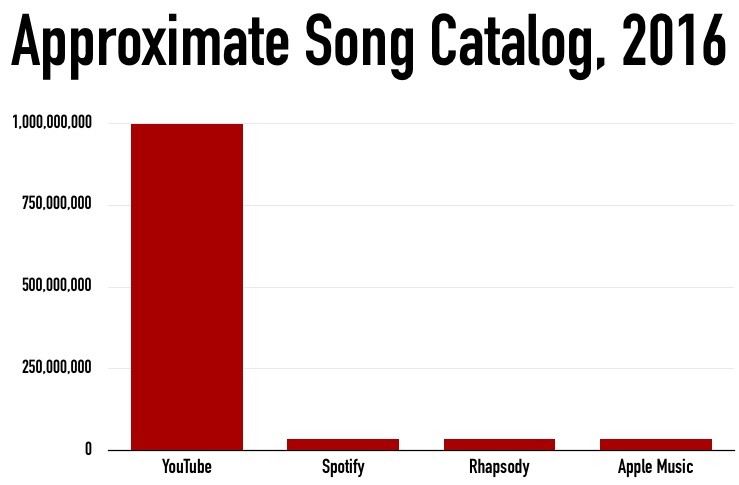Google says YouTube is already paying artists billions, while properly managing copyright through internal mechanisms like ContentID. Industry organizations like the IFPI say it’s not enough, and are pushing legislators hard on the matter.
Now, someone is taking notice: EU digital chief Andrus Ansip, who is now demanding changes in the way that YouTube compensates artists. According to details just published by the Financial Times, Ansip has pegged YouTube’s contribution to the music industry at roughly €600 million ($679 million) annually, which is just a fraction of rival plays like Spotify.
Ansip also estimated that YouTube serves roughly one billion users, a figure that dwarfs Spotify’s 30 million paying subscribers. That absolutely eclipses the overall user totals of every other music streaming service, combined. So why is YouTube paying so much less?
Part of the problem is that 99.999% of YouTube Music videos are accessed for free, with artists oftentimes receiving $0. “This is not only about rights owners and creators and their remuneration — it is also about a level playing field between different service providers,” Ansup declared. “Platforms based on subscriptions are remunerating those authors; others service providers do not. How can they compete?”
According to unnamed sources to DMN, that’s a question that Spotify CEO Daniel Ek continually asks major label executives, especially when they demand that Spotify close its free access tier. “Ek is adamant on that,” one source relayed. “If YouTube gets to be free, Spotify gets to be free, too.”
So, shut down YouTube’s free tier? Not so fast, especially with multi-billion dollar parent Google fighting back. In Congressional testimony earlier this month, Google claimed to have paid $3 billion back to music rights owners, while furiously defending against claims of devaluing music. “Google has paid out over $3 billion to the music industry, and that number is growing significantly year on year,” the company testified.
Google also pointed to serious problems getting consumers to pay, a behavioral situation that first started in the late 90s with Napster. “Only about 20 percent of people are historically willing to pay for music. YouTube is helping artists and labels monetize the remaining 80 percent that were not previously monetized.”
The post EU Official Tells YouTube: Stop Exploiting Artists appeared first on Digital Music News.

